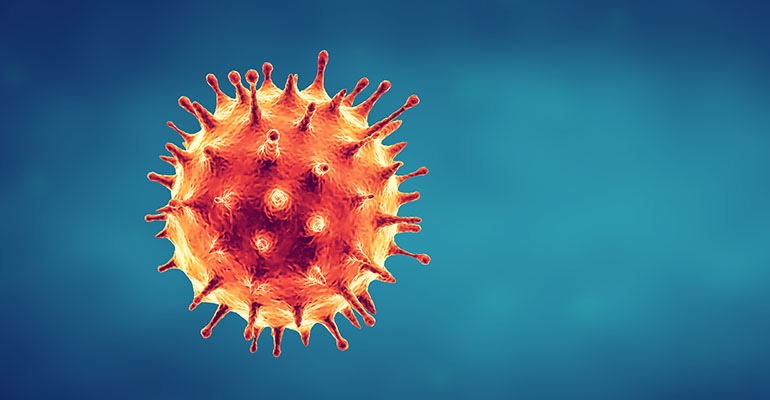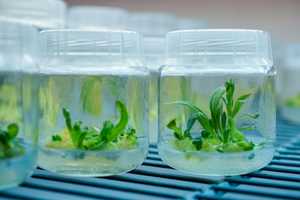Rise of viruses jumping to other species is often spurred by human activity.
April 7, 2020

Viruses have been increasingly shifting from animals to people, a recent trend that has researchers at The Ohio State University closely studying a pig virus that may be able to survive in human cells.
The rise in viruses jumping to other species, so-called “spillover” events, is spurred by people, particularly in the developing world, cultivating land that was once isolated forests, the university said in an announcement.
In clearing those areas, people are exposing themselves to the viruses of wild animals that once lived secluded in those forests, said Scott Kenney, an assistant professor of veterinary preventative medicine at the Ohio State College of Food, Agricultural & Environmental Sciences (CFAES). Kenney’s research focuses on viruses that spread between animals and people.
Exotic live animal markets are another place where animals, some of them infected with viruses, mingle with people who are handling them or eating around them.
“It’s the perfect place for a virus outbreak,” Kenney said.
Someone in that marketplace might touch the waste, saliva or blood of a live animal and then consume the virus by not washing their hands before eating, or simply by touching their face, he explained. The pathogen can then multiply inside the new host, overcoming the person’s immune response. Once in the infected person, the virus can then change to become transmittable from person to person.
COVID-19 is but one of many diseases in recent years that started in animals before it shifted to people.
“Many viruses adapt as they move from species to species, picking up new abilities to leap the barriers presented by different hosts along the way,” Kenney said.
Before the novel SARS-CoV-2 coronavirus, which causes COVID-19, triggered a world pandemic, Ebola — possibly coming from bats or primates in Africa — transferred to people, now killing 70% or more of the people it sickens, CFAES said.
Other examples include severe acute respiratory syndrome (SARS) and Middle East respiratory syndrome (MERS), both coronaviruses that likely started in bats. The SARS coronavirus (SARS-CoV-1) moved into a small Asian mammal called the palm civet, the MERS coronavirus moved into camels, and then both made the jump into people.
Every year, another familiar virus spills over from animals to people: the common flu. Arriving in migratory birds that fly from Asia, the flu virus is spread among birds, including chickens, and among mammals, including pigs and humans.
“We’re lucky in that many of these previous virus spillovers have not been rapid spreaders and require direct contact in order to infect someone,” Kenney said.
Coronaviruses are particularly adept at jumping species because, unlike many other viruses, they can recombine and change quickly, adapting to be able to overcome the natural barriers to moving into a different species, Kenney said.
One coronavirus, the porcine deltacoronavirus, is especially concerning to Kenney and other researchers at CFAES, which is why they are closely watching the progression of the virus. So far found only in pigs, the porcine deltacoronavirus has the potential to shift to humans, Kenney said.
First identified in 2012 in Chinese pigs, the virus later caused an outbreak of diarrhea in Iowa, Illinois and Ohio pigs, killing some of them.
In 2018, Kenney, along with colleagues from CFAES and the Netherlands, showed that the porcine deltacoronavirus can bind to and enter human cells. Researchers have yet to determine if a pig infected with the deltacoronavirus has sickened other animals, such as chickens, or has passed it on to humans, CFAES said in the announcement.
“At this point, we don’t know if people are already getting sick from porcine deltacoronavirus or if people have adapted to be resistant to infection,” Kenney said.
Similar pig coronaviruses known about since the 1940s have not triggered diseases in people, he added.
“So that suggests a human pandemic is unlikely, but with viruses you can never say never,” Kenney said. “We don’t want to be caught off guard again, struggling to understand a novel disease and playing catchup developing drugs and vaccines while people are dying.”
You May Also Like



